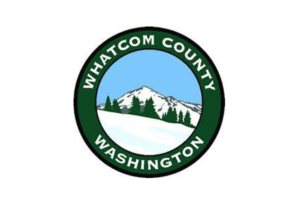Over the last nine years New Venture Advisors has had the privilege of participating in over 60 food systems studies ranging from feasibility studies to market assessments, business plans and strategic business improvement plans. They have ranged in focus from local food hubs to value added processing facilities, kitchen incubators, local grain storage and healthy food access. Each project is unique and we can never guess at the start what the outcome will be. Deeply assessing a business concept’s viability requires in-market research (surveys, interviews, community meetings, and focus groups with all stakeholders across a local food supply chain) and deep ongoing dialogue with the planning team to understand their vision and goals (related to both profitability and impact).
Historically, our work plan for a project has unfolded as follows. We conduct broad research (secondary research, interviews with key stakeholders, kickoff meetings with the planning team, etc) and then complete extensive primary research (interviews and surveys with producers, buyers, etc). The findings are analyzed and the insights are used to develop and refine a business model. This business model then becomes the basis for in-depth financial modeling and analysis.
By and large, we have found this approach to work extremely well, ensuring that our research is sound, the developed vision is well informed, and the financial models are comprehensive, nuanced, and accurately rooted in reality. And over time, we have come to recognize that there are certain patterns across all of our studies, and this got us thinking about developing a set of tools that would enable others planning similar types of enterprises to shortcut their way through some of the upfront development steps.
3 Trends We’ve Found Across Our Studies
1. It is Hard to Accept that a Food Hub Can’t Do It All and Turn A Profit
We often find ourselves having difficult discussions with clients when we’ve gone far down the path of developing a business model in conjunction with the planning team, farmers, buyers and other stakeholders.
What do I mean by difficult conversations? Here I’m referring to conversations on balancing how the food hub or food business should be developed in order to best meet the needs of their constituents against elements of the business model that will (or won’t) drive profitability.
For example, through a project’s research and analysis, the client team may have developed a fairly complex business model for their envisioned food hub. They see that their food hub needs to provide washing, grading, and packing services as well as inbound and outbound distribution. Additionally, they may want to ensure the food hub invests in developing a strong brand that resonates with consumers and compels buyers to order consistently. At the same time, they may want to set a relatively low case margin (i.e. the percentage of an average case price that goes to the food hub versus to the farmer) of 20%, because their farmers have expressed grave concerns about the food hub being an expensive middleman in the process. Finally, the team may also see financial viability as important goal, as they do not want to be grant reliant long-term.
This type of business model, in which a business offers many complex, high cost and labor intensive services but has a relatively low pricing structure, is typically not well positioned for financial success.
Discussing this tension and balance upfront with clients, along with easy to understand numbers, helps teams avoid having unrealistic expectations (and sharing unrealistic expectations with stakeholders).
2. Secondary market research follows the same steps regardless of the region being studied
Projects are best kicked off with broad research to gauge the general food landscape and supply chain of clients’ specific region, and we’ve found that these analysis steps are consistent in every project.
Regardless of the project’s scope, focus or region, there are some elements of the project analysis and financial model that will be relatively unchanged.
For example, during a project’s kickoff phase it is extremely valuable to conduct secondary research to understand the volume of agricultural supply and demand that exists in a region. We’ve conducted projects in states where local produce production is extremely low and identifying this early on allowed us to set appropriate expectations with our clients (or in some cases, to shift the focus to other, more prevalent products such as grains or proteins).
Quantifying supply and demand of agricultural products in a region—in what we refer to as a “top down” analysis—is a set process, but one that is extremely onerous, requiring data to be pulled, calculated and summarized from several USDA databases and the US Census. After executing these steps multiple times, we realized that there was a way to better automate this process and that this automation could be beneficial to everyone, not just New Venture Advisors’ clients.
3. Knowing fundamental limitations at the start allows for a more effective research plan
There are often features or services that are essential to an envisioned local food business. When we find out mid-way through a project that there is no way these features can be offered, they become the “non-starters” for the project to ever take shape.
What do we mean by “non starters”?
For example, we might work with a client that has low-cost access to a 3,000 square foot building and the team wants to convert it into a kitchen incubator to serve local food entrepreneurs in their community. Two months into the project, we learn that the site has restrictions that make it infeasible to build any long-term cold or frozen storage. When a shared kitchen has no cold or frozen storage, it significantly limits the type of entrepreneurs it can serve and its ability to help these entrepreneurs truly build their businesses.
Had this knowledge been made clear upfront, it would have enabled us to engage in strategic discussions when the project work plan was being finalized, rather than down the line after much of the research had been conducted. We may have debated whether or not a kitchen incubator is the right use case to pursue, given these storage limitations. Alternatively, we may have developed an interview and survey plan designed explicitly to find that small percentage of entrepreneurs that do not need overnight storage. Or, finally, we may have first conducted more research to understand the cost and potential to build out storage, and the implications of this build out on the cost structure of utilizing the facility.
In reflecting on these trends, New Venture Advisors saw a very cool opportunity.
Why not create a set of tools to automate aspects of our approach to both (1) help us work more effectively with our own clients and (2) enable individuals, entrepreneurs, planning groups and others across the country to conduct preliminary assessments of their food business vision. Tools like this could help teams invest more efficiently in feasibility studies and could ensure these feasibility studies and implementation plans are developed more strategically.
And with that (and of course, a lot of algorithm development, analysis, design and programming…and late nights!), New Venture Advisors’ Toolsite was born.
What is the New Venture Advisors Toolsite?
The toolsite contains six “widgets” that enable users to conduct preliminary assessments of various types of food system infrastructure by providing inputs that define their region, requirements, restrictions, etc. Click here to access the NVA Toolsite.
- Local Food MarketSizer® estimates unmet demand for locally produced food in a chosen geographic area.
- Local Produce HubSizer® estimates breakeven sales, acreage and capacity thresholds for various types of food hubs, and provides success indicators related to supply, demand and competition based on geography.
- Frozen Processing HubSizer® estimates facility size and breakeven throughput, revenue and utilization for blast and cryogenic IQF freezing processes.
- Rural Grocery HubSizer® estimates potential throughput, sales and profit contribution of a food hub operating out of a rural grocery store.
- Kitchen Facility HubSizer® estimates the capacity and breakeven utilization for a commercial kitchen or kitchen incubator built out in an existing facility.
- Produce Facility HubSizer® estimates the throughput (cases, pounds, acres) and revenue at break even and at full capacity for a produce aggregation and distribution hub built out in an existing facility.
These tools provide results that aim to help users start their planning efforts on the right foot, and address many of the pitfalls described above. Specifically, we hope they:
- Provide you with a preliminary sense of your food system opportunity, allowing you to set more realistic, data-driven expectations for what your food business might look like, how large your market size is, how successful it might be, and its risks.
- Enable you or your team to have better informed discussions even before you begin a planning effort (or, even better, before you invest in resources to launch a planning effort) about the key variables related to a local food business and its success factors. Perhaps you are envisioning launching a local frozen produce processing facility. Our tools will help you understand the different “individual quick frozen” technologies you will want to consider, and the infrastructure, cost and opportunities of each in your region and the volume of product you’ll need to source and sell in order to break even. Or perhaps you are looking to build out a shared use kitchen. Our tools will help you understand the impact of building it out with 3-4 “stations” (i.e. in a way that allows 3-4 food businesses to operate side by side) versus with just a single station. The list goes on! The hope is that as you use these tools, and reuse them (refining inputs or testing new ideas each time) you can start to see how different variables impact your opportunity and risks, enabling you to go into a planning effort with eyes wide open!
- In some cases, we envision that these tools may cause you to rethink or even fully redirect your energy and focus, in a way that enables you to be as efficient and strategic with funds and time as possible. If you have been envisioning building a local food hub in your region, but you thoughtfully complete the Local Produce HubSizer® only to find that the opportunity is quite limited in your area, we hope that this information is empowering and not discouraging! It doesn’t mean that there is no room for a new local food enterprise! In fact it may mean quite the opposite—that something else is needed entirely, such as technical assistance training for your agricultural producers or a successful branding and marketing campaign that encourages buyers to “buy local” spurring demand for local produce before a food hub is set up. Alternatively, the results may cause you to shift your expectation that a food hub you develop must be financially viable. You may decide that the region does need a hub, and you have to find a way to grant fund it for quite some time before the market and supply catches up.
- Refine your research and work plan. In many cases, the tools will provide promising results. Our hope is that these results therefore bolster your energy and commitment to your local food business vision, and enable you to refine and focus your next steps strategically. Perhaps you complete the Local Produce HubSizer® and receive strong results; however, the results also indicate that there are quite a few existing food hubs in your state. In this scenario, you might decide to revise your feasibility and implementation plan such that it kicks off with a convening of existing food hubs in your region, in order to identify the role your envisioned hub can play vis-a-vis existing operations.
How do we recommend using these tools?
These tools are designed for people with at least a preliminary understanding of local food systems and basic business concepts (such as revenue, margin and break even). Without this background, it may be difficult for a user to grasp the inputs each tool requires and to interpret its outputs. As such, we recommend that if you are starting off with no knowledge on these fronts, to find a colleague, stakeholder or friend that has some experience so you can complete the tools together.
While you certainly can complete these tools quickly to see what kind of results you get, we recommend allocating time and energy to them. Read the inputs carefully, think through your responses, and (where appropriate) take the time to conduct baseline research. The Local Produce HubSizer® has been developed with the hope that users will invest the time required for thoughtful inputs. In fact, we have created a guide to help users conduct preliminary assessments of their supply, demand and competitive landscapes. If these steps are conducted, a user will be well on the way through a preliminary feasibility study after completing the tool and reviewing its output.
Finally, we hope you’ll use these tools many times. Fill them out, see your results, and then go back and adjust inputs to see how this impacts your output. Use this type of iteration to build a strong understanding of the variables and profitability drivers of the food businesses you are exploring, and to refine your vision for your business model. Have a notebook handy to capture results and record the inputs you’ve tested.
If you have questions about how the tools were developed or aren’t sure why you received the results that you did, please complete the “Ask a Question” form, which you can find at the bottom of the results page for each of the tools.
What do these tools NOT do?
These tools do not intend to be perfect representations of reality and will not come close to taking the place of a detailed, research-driven pro forma P&L. Across all tools, many assumptions and standardizations had to be made.
For example, the Kitchen Facility HubSizer® was built with the assumption that an owner will charge clients by the hour. We recognize, however, that not all shared kitchens are designed in this way (some have monthly fees and others charge by the “block”). The Local Food MarketSizer® will output the volume of produce that is grown in a region. However, you may begin your research and find that the vast majority of produce grown in your region of interest is actually harvested to be processed into juice for a major consumer products brand—not the type of product you can move with a local food hub. And the Produce Facility HubSizer® assumes a specific warehouse storage configuration, although, of course, every food hub has a different racking configuration.
Because food systems research and business development is replete with nuances like these, our tools do not in any way intend to take the place of on-the-ground research and detailed financial model development.
Rather than try to use these tools in place of in-depth, thoughtful research, our hope is that they allow you to plan and execute research more strategically, efficiently and intelligently—so the output of your planning efforts result in a strong business model.
Image: Teerawut Bunsom/Shutterstock



